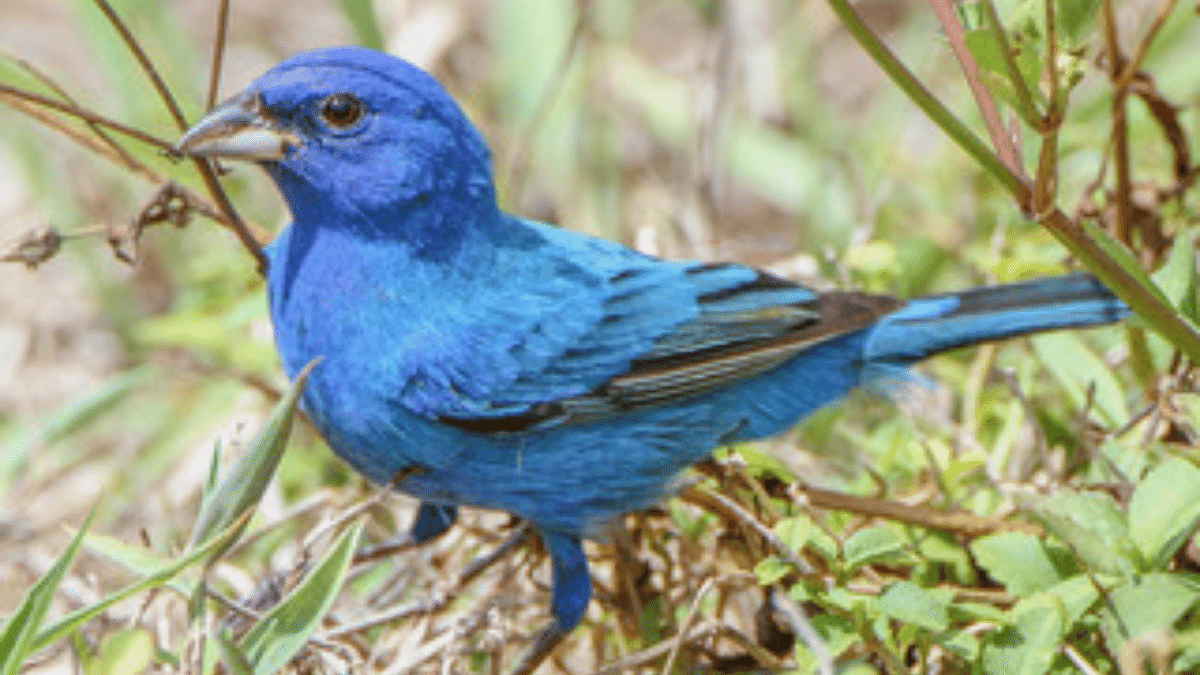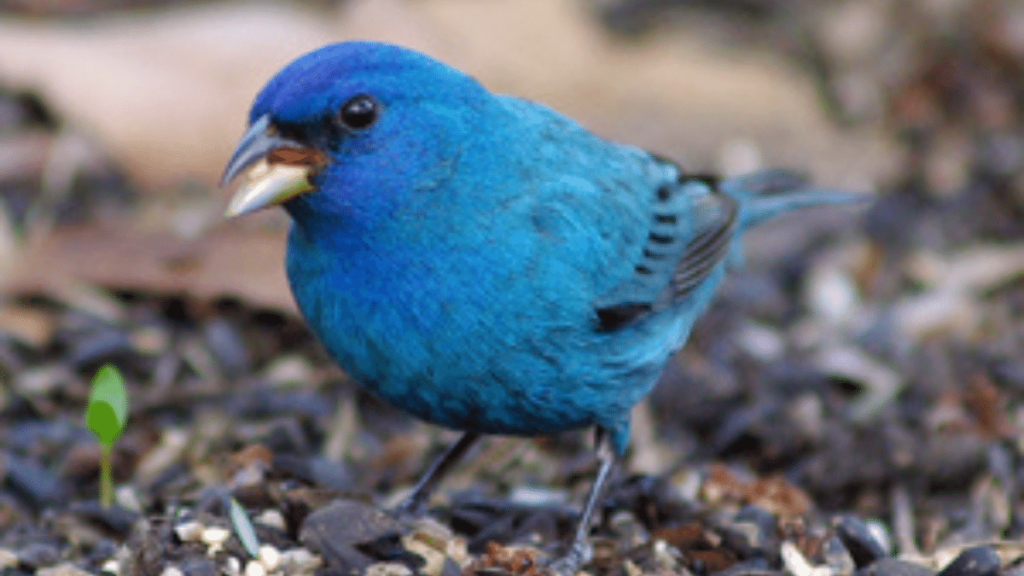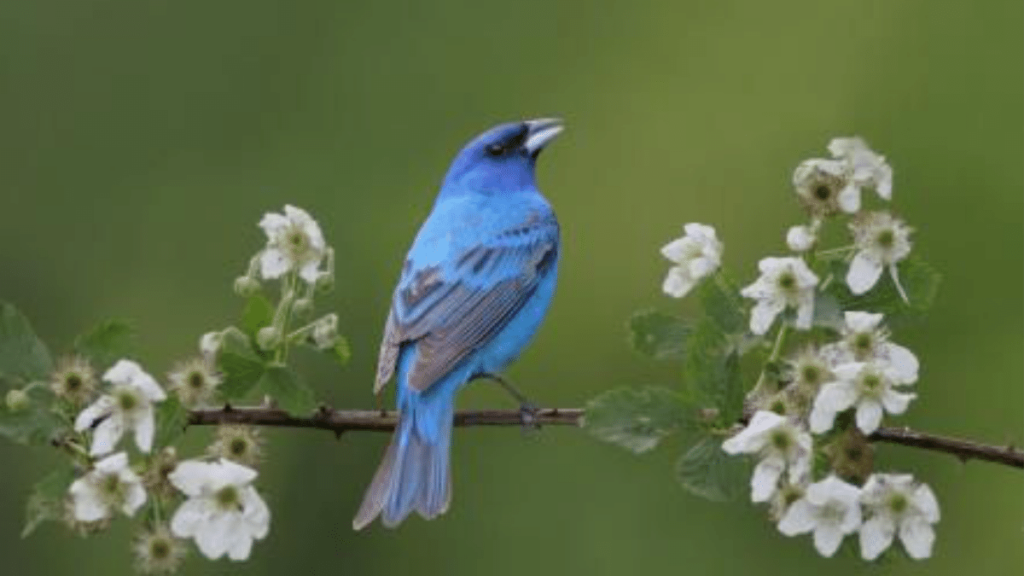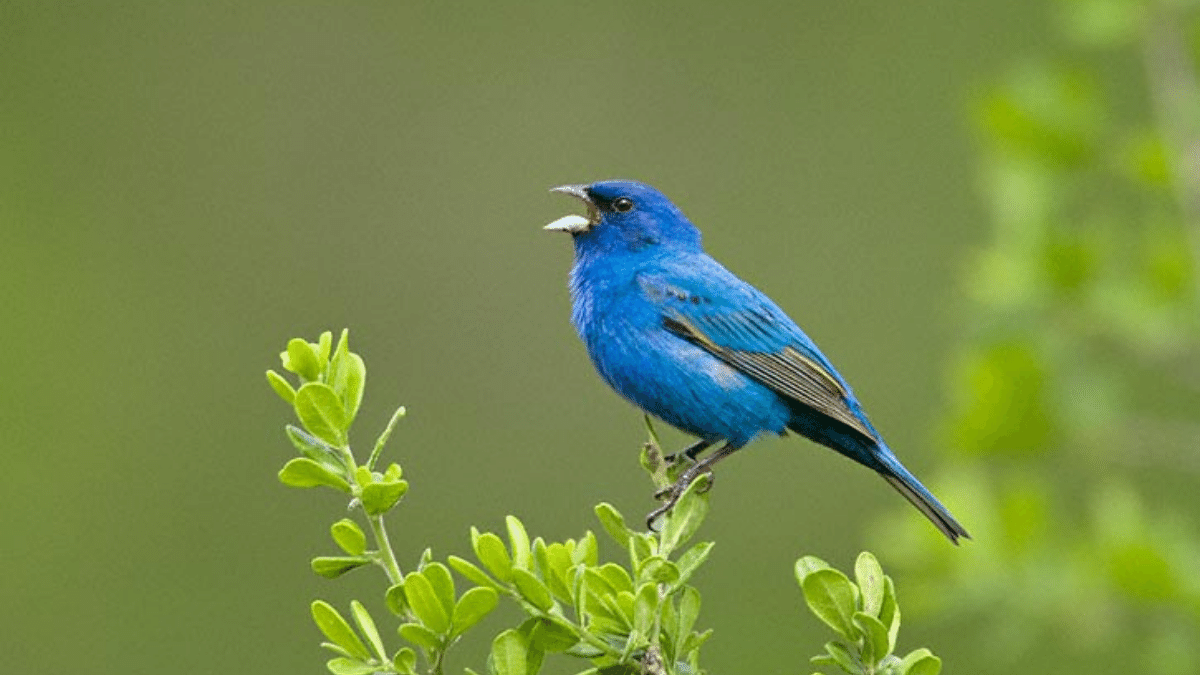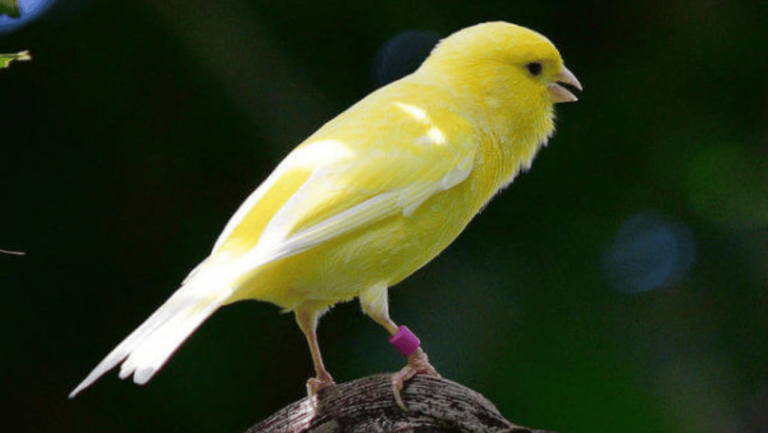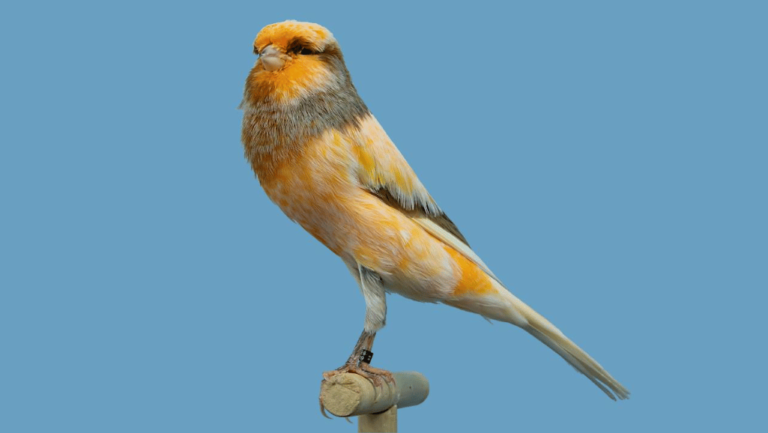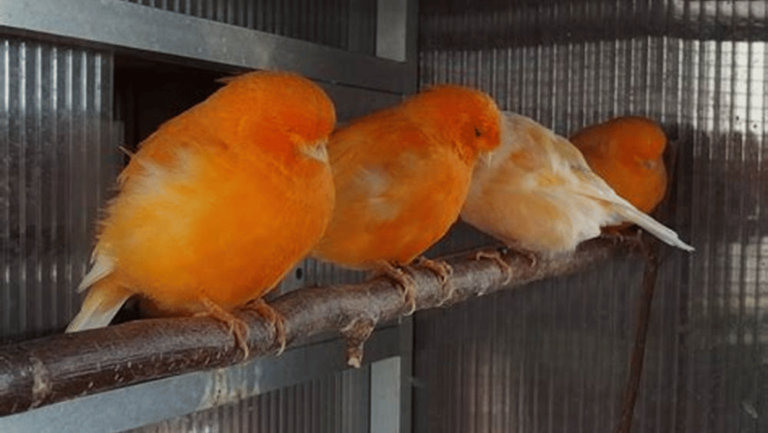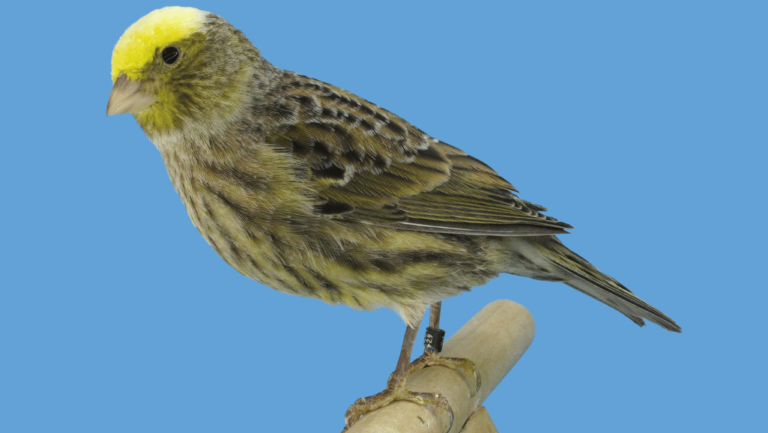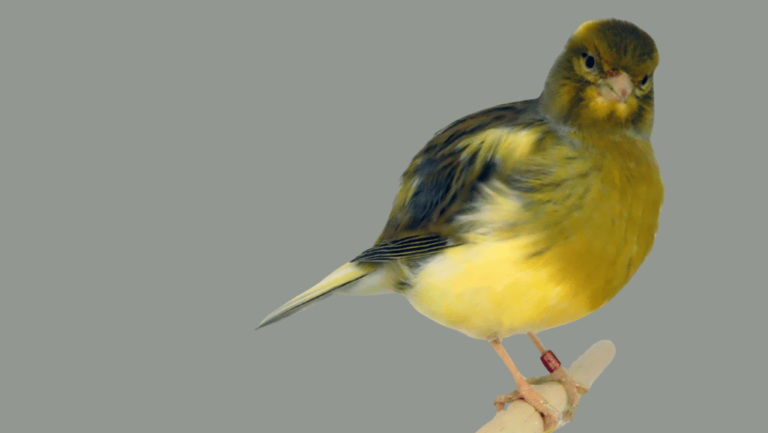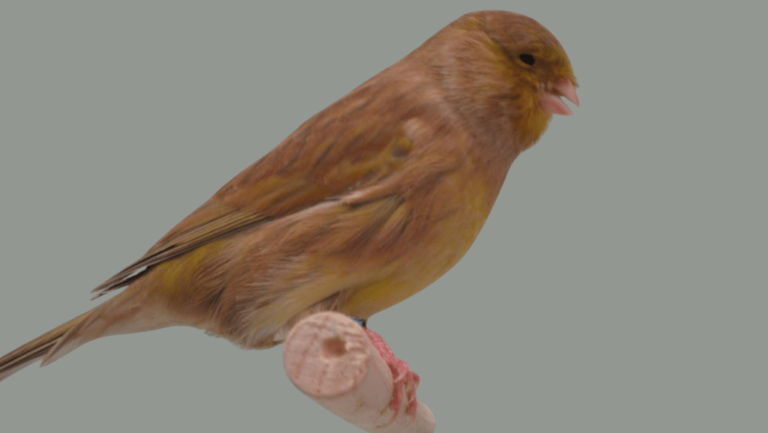Blue Factor Canaries are bred for their captivating hues, specifically focusing on the genetics that control their coloration. These canaries have a wide variety of colors, color intensities, and variegations, all determined by the genes responsible for melanin and lipochrome production. Melanin produces the black and brown ground color, while the absence of melanin results in clear birds. Lipochrome, also known as the Ino-Factor, determines the yellow, red, or white base color in the canaries. Understanding these genetic factors is key to appreciating the diversity in canary color and plumage.
Key Takeaways:
- Blue Factor Canaries are bred for their unique and captivating colors.
- Melanin and lipochrome are the genetic factors responsible for canary coloration.
- Melanin produces the black and brown colors, while lipochrome determines the yellow, red, or white base color.
- Understanding the genetics of color helps in appreciating the diversity in canary plumage.
- Blue Factor Canaries exhibit a wide variety of colors, color intensities, and variegations.
Different Color Factors in Canaries
Canaries are renowned for their stunning array of colors, which are determined by various color factors. These factors play a significant role in creating the unique appearances and plumages of canary birds.
Melanin: Black and Brown
Melanin is responsible for darkening the colors in canaries. The presence of black or brown melanin results in deep and rich coloration. Canaries with high levels of melanin have striking dark markings and patterns on their feathers.
Lipochrome: Yellow, Red, and White
Lipochrome is another crucial color factor in canaries, determining the base color of their plumage. Yellow lipochrome produces the classic yellow canary, known as Lutino, which resembles the coloration of wild canaries. Red lipochrome, introduced through cross-breeding with South American Red Siskins, is responsible for the vibrant and rosy tint seen in Red Factor Canaries, also known as Rubino. On the other hand, canaries lacking base color pigments exhibit a white plumage, which is distinct from albinos as they still possess melanin.
The combination of melanin and lipochrome leads to a wide range of color variations and patterns in canaries. By selectively breeding canaries with different color factors, breeders can achieve a remarkable diversity of hues and visual characteristics.
Canary Color Variegation
Canary breeding techniques play a crucial role in creating captivating variations in color and markings. These color variations are a result of the presence of melanin in canaries. Breeders often use various classification systems to categorize canaries based on their levels of pigment. Understanding these classifications is key to breeding canaries with desired color patterns and markings. Let’s explore the different categories of canaries based on their melanin levels:
Clear Canaries
Clear canaries have no melanin at all. They are characterized by vibrant, solid colors without any patches or markings. These canaries exhibit a clean and uniform appearance, making them highly sought after by breeders and canary enthusiasts.
Self Canaries
Self canaries have a rich melanin presence throughout their plumage. As a result, they lack the lipochrome colors commonly found in other canaries. Self canaries exhibit deep and intense shades of black, brown, or other dark colors, making them visually striking.
Ticked Canaries
Ticked canaries display small patches of melanin distributed randomly across their plumage. These tiny specks of melanin create a unique and intricate pattern, adding depth and visual interest to the canary’s overall appearance.
Foul Canaries
Foul canaries have a few light feathers scattered on an otherwise dark coat. These subtle accents of light color contrast beautifully with the overall dark plumage, creating a delicate and captivating effect.
Variegated Canaries
Variegated canaries fall between the ticked and foul types, displaying varying degrees of dark coloration. They have a mix of melanin patches and light feathers, resulting in a harmonious blend of contrasting colors. Variegated canaries offer a balance between bold and subtle color patterns.
Understanding the different categories of canaries based on melanin levels is an essential aspect of canary breeding. By utilizing these breeding techniques, breeders can selectively pair canaries to create canaries with specific color characteristics and markings.
Next, let’s explore the fascinating world of canary color variations in show competitions and the diverse genetic variations found in these charming birds.
Color Canaries for Shows
In canary shows and competitions, color plays a significant role in categorizing and showcasing these beautiful birds. Each color variation represents a distinct category, allowing breeders and enthusiasts to display the stunning diversity of canaries. Let’s explore the various color categories that dominate the canary show circuits:
Green Canaries
Green canaries possess a yellow base color with the addition of melanin, resulting in stunning greens and blacks. Their vibrant plumage creates a captivating sight, making them a popular choice among canary enthusiasts.
Yellow Melanin Canaries
Yellow melanin canaries exhibit a predominantly yellow appearance with scattered dark flecks. These birds have lower levels of pigment, allowing the radiant yellow color to dominate their plumage.
Red Factor Melanin Canaries
Red factor melanin canaries display a striking red base color complemented by dark pigmentation. These canaries add a bold burst of color to any exhibition, standing out among their counterparts.
Yellow Lipochrome Canaries
Yellow lipochrome canaries are the epitome of traditional yellow canaries. With minimal dark pigmentation, these birds showcase a bright and pure yellow plumage, embodying the essence of canary beauty.
Red Factor Lipochrome Canaries
Red factor lipochrome canaries lack melanin pigment but possess a red factor that gives rise to a range of shades, varying from delicate pinks to vivid oranges and deeper tones of red. The unique coloration of these canaries captivates the attention of both judges and spectators alike.
Blue Factor Canaries
Blue factor canaries possess a white or yellow base color, subtly enhanced by a trick of light that bestows a stunning greenish or bluish-gray appearance. These enchanting canaries create an ethereal and dreamlike ambiance in any show setting.
Canary shows and competitions are a testament to the artistry and dedication of breeders who excel in creating and presenting these mesmerizing color canaries. The diverse color categories allow enthusiasts to celebrate the intrinsic beauty of canaries through a vibrant display of hues and patterns.
Other Genetic Variations in Canaries
In addition to the main color factors, there are several other genetic variations that contribute to the stunning variety of canary birds. These genetic variations impact their appearance, coloration, and overall beauty. Let’s explore some of these fascinating genetic variations:
Dominant White and Recessive White Canaries
Dominate white canaries and recessive white canaries exhibit gorgeous pure white feathers. These canaries lack the production of melanin and lipochrome, resulting in their striking and pristine appearance.
Pastel Factor Canaries
Pastel factor canaries possess a unique genetic variation that reduces the amount of melanin produced. As a result, their colors appear softer and more pastel-like, adding a delicate touch to their overall beauty.
Ivory Factor Canaries
Ivory factor canaries have a genetic variation that reduces the overall intensity of their colors. This variation creates a subtle yet elegant effect, showcasing a muted and sophisticated palette.
Opal Factor Canaries
Opal factor canaries carry a recessive gene that dilutes the production of melanin. This genetic variation results in gray and washed-out black colors, creating a stunning and unique appearance.
Cinnamon and Fawn Canaries
Cinnamon canaries lack black pigmentation and instead display beautiful brown shades on a yellow base, adding warmth to their appearance. Fawn canaries, on the other hand, have a white base instead of yellow, creating a soft and charming color combination.
These genetic variations in canaries contribute to the overall diversity and beauty of these birds. They showcase the intricate nature of canary genetics and highlight the fascinating range of colors and color combinations found in Blue Factor Canary birds.
Canary Breeding Techniques
Breeding canaries for specific color traits requires careful selection and pairing of parent birds. Breeders often use a knowledge of genetics to achieve desired color outcomes. By understanding the different color factors and their inheritance patterns, breeders can selectively mate birds to produce the desired color variations. Breeding techniques such as crossing specific color factors, line-breeding, and selective pairing can help breeders achieve the desired results. Careful record-keeping and monitoring of the breeding process are essential to maintain and improve canary color genetics.
Canary breeding techniques involve strategic mating and selection to produce desired color traits in the offspring. Understanding the inheritance patterns of different color factors plays a crucial role in achieving consistent and predictable results. Breeders employ various techniques to manipulate the expression of specific color genes, creating canaries with unique and stunning colors.
Here are some common breeding techniques used in canary breeding:
- Crossbreeding: Crossbreeding involves pairing canaries with different color factors to introduce new color variations. This technique allows for genetic combinations that may not occur naturally, expanding the range of color options.
- Line-breeding: Line-breeding involves mating closely related canaries within the same color lineage. This technique helps fix desired color traits by reinforcing the genetic characteristics through successive generations.
- Selective pairing: Breeders selectively pair canaries based on their color genetics to enhance specific traits. This technique focuses on matching canaries with desirable color genes to increase the chances of producing offspring with the desired colors.
- Record-keeping and monitoring: Keeping detailed records of parentage, color traits, and genetic combinations is essential for tracking and improving canary color genetics. Regular monitoring of breeding pairs and their offspring helps breeders identify favorable traits and make informed decisions for future pairings.
By combining these breeding techniques with a thorough understanding of canary color genetics, breeders can create canaries with a wide range of stunning colors and patterns. The careful selection of parent birds, strategic pairings, and continuous improvement through record-keeping and monitoring are essential for maintaining and enhancing canary color genetics.
Canary Care and Health
While color genetics play a significant role in canary breeding, providing proper care and attention is equally important for these beautiful birds. It is crucial to maintain their overall health and wellbeing to ensure they can display their vibrant colors and sing their melodious tunes.
Canary Bird Care
Caring for canaries involves providing a balanced diet, suitable living conditions, and regular veterinary check-ups. A healthy canary requires a mix of seeds, fresh fruits, and vegetables to meet its nutritional needs. A varied diet helps promote optimal health and supports their vibrant plumage.
Cage Requirements for Canaries
When housing canaries, it is essential to provide a clean and spacious cage or indoor aviary that allows for natural perching and flying. The cage should be large enough to accommodate their wingspan and equipped with perches at different heights. Additionally, including environmental enrichment, such as toys and natural branches, helps keep canaries mentally stimulated and prevents boredom.
Pet Canary Health
Regular veterinary check-ups are necessary to monitor the health of pet canaries. Canaries can be susceptible to respiratory infections, feather plucking, mites, and vitamin deficiencies. Owners should be observant of any signs of illness or distress and seek appropriate veterinary care when needed. Maintaining a clean and stress-free environment promotes a healthy and happy life for pet canaries.
Indoor Aviary for Canaries
Creating an indoor aviary for canaries allows them to have more space for flying and exploring. An indoor aviary should offer ample flight space, perches, and environmental enrichment. It is essential to ensure proper ventilation, temperature control, and easy access for cleaning and maintenance. Providing an enriched and spacious environment contributes to the overall well-being and happiness of indoor canaries.
| Canary Care Tips | Benefits |
|---|---|
| Provide a balanced diet | Ensures proper nutrition and vibrant plumage |
| Offer a clean and spacious cage or indoor aviary | Promotes physical and mental well-being |
| Arrange regular veterinary check-ups | Prevents and addresses health issues promptly |
| Monitor for signs of illness or distress | Enables early intervention and treatment |
| Provide environmental enrichment | Prevents boredom and promotes natural behaviors |
Canary Song Training and Competitions
While color is a prominent feature of canaries, their melodious songs are equally valued. Owners can train their canaries to sing specific tunes or songs using a technique called song training. This involves playing recordings of desired song patterns to the canary, encouraging them to mimic and learn the melody.
Canaries with exceptional singing abilities can participate in song competitions, where judges evaluate the quality and complexity of their songs. These competitions showcase the talent and skill of canaries beyond their visual beauty.
Song Canary Training Techniques
Song training is a process that requires patience and consistency. Here are some techniques to help train your canary:
- Start training when the canary is young, as they are more receptive to learning new songs.
- Play the desired song recordings for short periods of time, gradually increasing the duration as the canary becomes familiar with the melody.
- Use positive reinforcement, such as rewards or praise, to encourage the canary to sing along with the recorded songs.
- Practice regularly, ideally in a quiet environment where the canary can focus on the songs without distraction.
Canary Song Competitions
Canary song competitions provide a platform for showcasing the unique vocal abilities of these birds. Judges evaluate the canaries based on criteria such as pitch, rhythm, clarity, and overall complexity of the song.
Competitions may have different categories, including solo performances and group performances. Canaries that demonstrate exceptional talent and versatility in their singing are often awarded top honors.
Participating in song competitions not only allows canary owners to appreciate the remarkable vocal abilities of their birds but also enables them to connect with fellow canary enthusiasts and learn from experienced breeders and trainers.
Canary Song Competition Winners
| Competition Year | First Place Winner | Second Place Winner | Third Place Winner |
|---|---|---|---|
| 2020 | Chirpy | Melodia | Serenade |
| 2019 | Solo | Harmony | Concerto |
| 2018 | Sonata | Rhapsody | Aria |
These winners have captivated audiences and judges with their remarkable vocal performances, showcasing the diverse range of talent that canaries possess in the world of song competitions.
Canary Lifespan and Aging
Canaries are delightful companions known for their vibrant colors and melodic songs. As responsible owners, it is essential to understand the lifespan and aging process of these beautiful birds. On average, canaries can live for 10-15 years with proper care and a balanced diet.
However, it is important to note that the lifespan of canaries can vary depending on several factors, including genetics, overall health, and the quality of care they receive. With appropriate attention and care, canaries can enjoy a long and fulfilling life.
Understanding Aging in Canaries
As canaries grow older, they may experience changes in behavior, appearance, and singing abilities. It is essential for owners to be aware of these changes and provide the necessary support and care to ensure their well-being.
Behavioral changes may include decreased activity levels, reduced vocalization, and increased rest time. Canaries may also exhibit signs of aging in their appearance, such as duller feathers or a decrease in feather quality. These changes are natural and should be expected as canaries enter their senior years.
Another notable change in aging canaries is the decline in singing abilities. While canaries are renowned for their melodious songs, older birds may experience a decline in their vocal range and intensity. This is a normal part of the aging process and should be embraced with understanding and patience.
Caring for Aging Canaries
Providing appropriate care and support for aging canaries is crucial to ensure their well-being and quality of life. Here are some essential guidelines for caring for aging canaries:
- Monitor your canary closely: Regularly observe your canary’s behavior, appetite, and overall health. Keep an eye out for any changes that may indicate illness or discomfort.
- Schedule veterinary check-ups: Regular visits to an avian veterinarian can help detect and address any health issues in a timely manner. Your veterinarian can also provide guidance on proper nutrition, supplements, and any necessary medical treatments.
- Adjust their diet: As canaries age, their nutritional needs may change. Consult with your veterinarian to ensure that your canary’s diet is appropriate for their age and health condition. Adding supplements, such as vitamins and minerals, may also be recommended.
- Create a comfortable environment: Aging canaries may appreciate a quieter and less stimulating environment. Ensure that their cage or aviary is spacious, well-ventilated, and free from any hazards. Provide them with soft perches and additional resting spots to support their aging bodies.
Remember, the key to caring for aging canaries is to provide love, attention, and tailored care based on their individual needs. With proper attention and support, you can help your canary enjoy a comfortable and fulfilling life throughout their golden years.
| Common Changes in Aging Canaries | Guidelines for Care |
|---|---|
| Duller feathers and decrease in feather quality | Ensure a balanced diet with appropriate supplements. Provide regular opportunities for bathing and grooming. |
| Decreased activity levels | Provide a spacious and safe environment with soft perches and resting spots. |
| Reduced vocalization | Embrace their natural decline in singing abilities with understanding and patience. Offer companionship and mental stimulation through gentle interaction. |
| Increase in rest time | Create a stress-free environment and minimize loud noises or sudden movements. |
Indoor Aviary for Canaries
Creating an indoor aviary for canaries is a great way to provide these beautiful birds with more space for flying and exploring. Not only does it allow them to stretch their wings, but it also promotes their overall well-being and happiness. To ensure the comfort and health of your indoor canaries, it’s important to consider their cage requirements and provide an enriched environment.
Cage Requirements
When setting up an indoor aviary for canaries, it’s crucial to choose a cage that meets their needs. The cage should be spacious, allowing the canaries to move around freely and exercise their wings. It should also have adequate height to accommodate their vertical flight patterns. A larger cage allows for better flight and reduces the risk of stress-related issues.
Here are some important factors to consider when selecting a cage:
- Size: Choose a cage that provides ample space for your canaries. The minimum recommendation is 18 inches long, 18 inches wide, and 24 inches high for a pair of canaries.
- Bar Spacing: The spacing between the bars should be narrow enough to prevent the canaries from escaping or getting their heads stuck.
- Material: Opt for a cage made of non-toxic materials, such as stainless steel or powder-coated wire, to ensure the safety and well-being of your canaries.
- Perches: Provide a variety of perches of different sizes and textures to promote foot health and exercise. Natural branches or dowels make excellent perches, as they mimic the canaries’ natural environment.
- Environmental Enrichment
In addition to meeting their basic needs, an indoor aviary should also provide environmental enrichment to keep your canaries stimulated and engaged. This can include:
- Toys: Offer a variety of toys, such as bells, swings, and ladders, to provide mental and physical stimulation. Rotate and change the toys regularly to prevent boredom.
- Natural Branches: Place natural branches inside the cage for the canaries to perch on and chew. These branches not only provide entertainment but also help maintain healthy beaks and claws.
- Foraging Opportunities: Hide small treats or seeds inside toys or paper rolls to encourage natural foraging behaviors, keeping your canaries mentally and physically active.
Remember to regularly clean and maintain the aviary to ensure a hygienic and healthy environment for your canaries. Provide proper ventilation and temperature control to prevent the aviary from becoming too hot or too cold.
A spacious and enriched indoor aviary provides canaries with the freedom to fly and explore, promoting their physical and mental well-being. By meeting their cage requirements and offering environmental enrichment, you can create a comfortable and stimulating home for your indoor canaries.
Pet Canary Health
Just like any other pet, canaries are susceptible to certain health issues. As a responsible owner, it is crucial to remain vigilant and regularly monitor your canary’s health. By keeping a close eye on their well-being, you can promptly identify and address any potential concerns that may arise.
Common health problems encountered in canaries include:
- Respiratory infections: Canaries are particularly prone to respiratory infections, such as avian influenza or canary pox. These infections can result in symptoms like difficulty breathing, wheezing, and discharge from the beak.
- Feather plucking: Feather plucking is a behavioral issue that can be brought on by stress, boredom, or underlying health problems. It is essential to address the root cause of feather plucking to prevent further complications.
- Mites: External parasites, such as mites, can cause discomfort and skin problems in canaries. Regular examination and treatment can help keep mite infestations at bay.
- Vitamin deficiencies: Inadequate nutrition can lead to various vitamin deficiencies in canaries, affecting their overall health and vitality. Providing a well-balanced diet rich in essential nutrients is key to preventing vitamin deficiencies.
To ensure the well-being of your pet canary, it is important to create a clean and stress-free environment. Regularly clean their cage, provide fresh food and water, and offer plenty of stimulation and enrichment. In addition, scheduling regular check-ups with an avian veterinarian will help catch any potential health issues early on and enable prompt treatment.
Tip: If you observe any changes in your canary’s behavior, appetite, or appearance, it is always recommended to consult a veterinarian with experience in avian health to ensure a proper diagnosis and appropriate treatment.
Common Health Concerns in Canaries and Their Symptoms
| Health Concern | Symptoms |
|---|---|
| Respiratory infections | Difficulty breathing, wheezing, discharge from the beak |
| Feather plucking | Excessive preening, bald patches, damaged feathers |
| Mites | Visible mites on skin and feathers, feather damage, skin irritation |
| Vitamin deficiencies | Sluggishness, decreased appetite, poor feather condition |
Note: Regular veterinary check-ups and a balanced diet can help maintain your canary’s health and longevity.
Conclusion
The Blue Factor Canary is a fascinating testament to the significant role that genetics play in creating the mesmerizing colors and captivating beauty of canaries. By comprehending the various color factors, mastering breeding techniques, understanding the care requirements, and prioritizing the health considerations, one can successfully breed and care for these magnificent birds.
Whether they are showcased in competitions or cherished as beloved pets, canaries offer a remarkable blend of visual splendor and melodious songs that bring immense joy to those who appreciate them. By recognizing the intricate workings of their genetics, we can gain a deeper understanding of and admiration for the stunning colors displayed by Blue Factor Canary birds.
In conclusion, the Blue Factor Canary is a testament to the awe-inspiring diversity that can be achieved through careful breeding and genetics. These feathered wonders enrich our lives with their vibrant hues and enchanting songs, reminding us of the intricate beauty that exists in the avian world.
FAQ
How are Blue Factor Canaries bred for their unique coloration?
Blue Factor Canaries are bred with a focus on the genetics that control coloration, specifically the genes responsible for melanin and lipochrome production.
What determines the variety of colors in Canary birds?
The genetics of melanin and lipochrome production determine the colors, color intensities, and variegations in Canary birds.
What are the different color factors in Canaries?
Canaries exhibit different color factors such as black and brown melanin, lipochrome yellow, lipochrome red, and white, which contribute to their unique appearances.
How are Canaries categorized based on their color variations?
Canaries are categorized into different color variations, including green canaries, yellow melanin canaries, red factor melanin canaries, yellow lipochrome canaries, red factor lipochrome canaries, and blue factor canaries.
What are the other genetic variations in Canaries?
Canaries also exhibit genetic variations such as dominant white, recessive white, pastel factor, ivory factor, opal factor, cinnamon, and fawn, which add further diversity to their coloration.
How do breeders achieve specific color traits in Canaries?
Breeders use selective breeding techniques and a knowledge of color genetics to achieve specific color traits in Canaries. They carefully select and pair parent birds based on desired color outcomes.
What care and health considerations are important for Canaries?
Proper care and attention including a balanced diet, regular veterinary check-ups, and a clean, spacious cage or indoor aviary are essential for maintaining the health and well-being of Canaries.
How can Canaries be trained to sing specific tunes?
Canaries can be trained to sing specific tunes through a technique called song training, which involves playing recordings of desired song patterns to encourage mimicking and learning.
What is the average lifespan of Canaries?
Canaries typically have a lifespan of 10-15 years with proper care and diet, although this can vary depending on genetics, health conditions, and overall care.
How can an indoor aviary benefit Canaries?
An indoor aviary provides Canaries with more space for flying and exploring, promoting their overall well-being and happiness.
What health issues are common in pet Canaries?
Common health issues in pet Canaries include respiratory infections, feather plucking, mites, and vitamin deficiencies, requiring regular monitoring, a balanced diet, and veterinary care.

